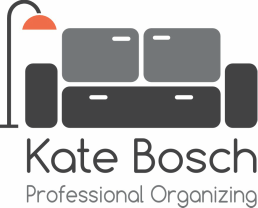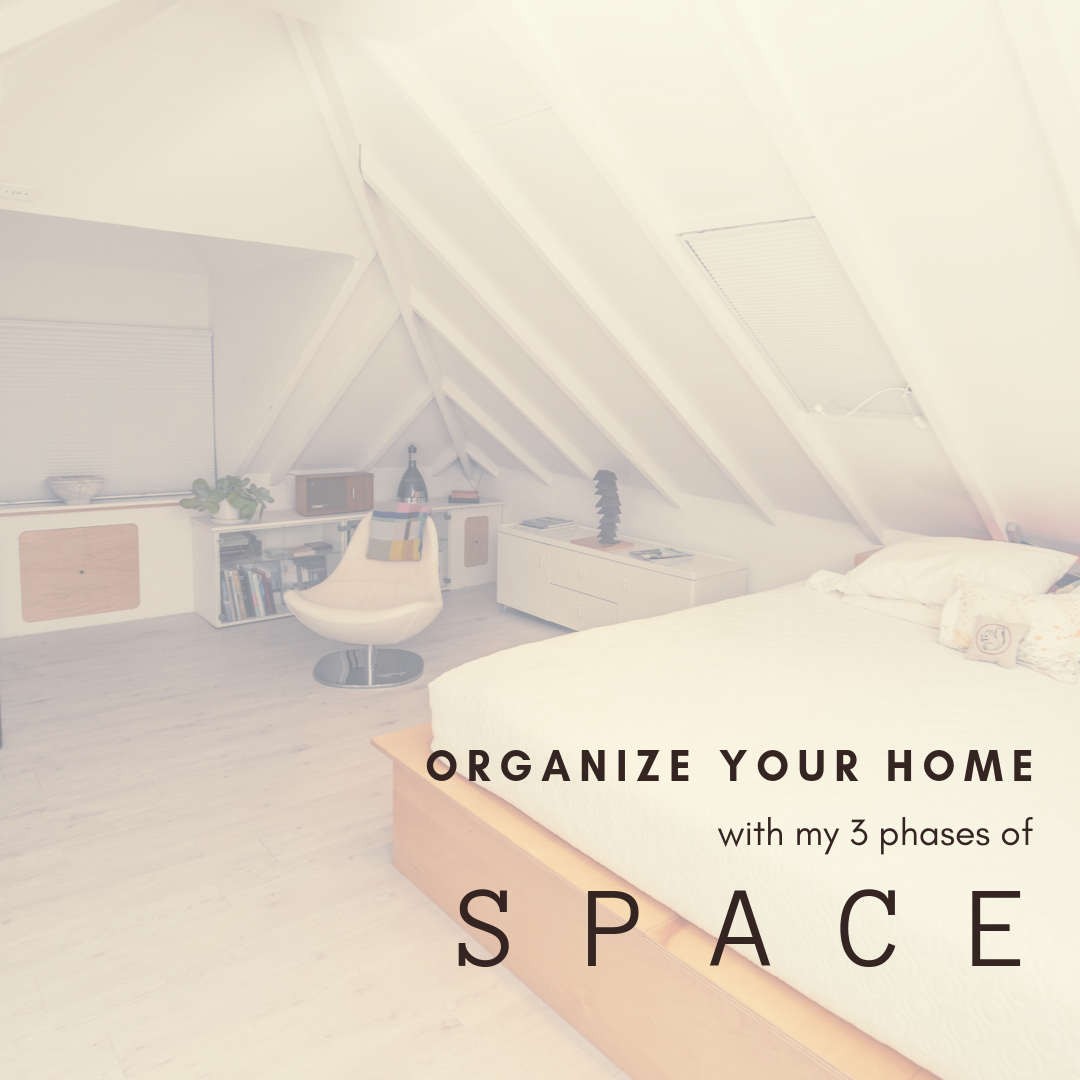|
In her indispensable, bestselling book Organizing from the Inside Out, organizing and productivity expert Julie Morgenstern introduces her SPACE acronym to define steps of the organizing process. SPACE stands for Sort, Purge, Assign a Home, Containerize, and Equalize. My organizing format incorporates the SPACE tasks, while grouping them into phases: Discovery, Take Shape, and Live & Learn. Each phase takes into account the bigger picture of what you wish to accomplish so you can truly organize your home for the life you want. DISCOVERY PHASE
The Discovery Phase is the time to figure out what you have and start thinking about where you’re going with it. The Discovery Phase is two-part. First, you literally discover what you currently have in the space by taking everything out and sorting it. You’re guaranteed to have a surprise or two! Who knew that the baby book was hiding in the linen closet? Why in the world do I have this many flashlights? Second, you assess the items and pare them down to discover what you really need and want based on how you will use the space once it has been reorganized. S=SORT As you pull things out of your space, start piling it into categories. At this point, don’t get bogged down with decisions about what to keep and what to discard. Just concentrate on grouping items together into broad categories (Getting too specific will slow you down.). When you discover something that doesn’t belong, put it in a “goes elsewhere” pile and bring it to the proper home after you’ve sorted everything. As you sort items during the Discovery Phase, think about these questions:
Keep the process moving by reminding yourself that this is just a rough sort so you can find out what kinds of things you have. Thinking about the questions above will get the thought process started so you’ll be ready to act when you begin the next step. P=PURGE/PARE DOWN Morgenstern’s next step is Purge, which means getting rid of what you no longer want or need. As the second action in my Discovery Phase, I prefer to call this PARING DOWN, which means “to diminish or decrease gradually.” Sure, you should always start by quickly tossing the low-hanging fruit -- obvious trash, broken or worn-out stuff, things to which you are not emotionally attached and about which you can make quick decisions -- but effective paring down takes time and consideration. Give yourself time to make good decisions about what to keep and what to eliminate. Consider 3 factors:
While you pare down your things, you are discovering what things you value and how you want to use your space. TAKE SHAPE PHASE Take Shape is the phase in which the true, Tetris-like organizing work happens. It’s when you put it all together into a tidy package. After you’ve discovered what you’re working with and pared down possessions to the essentials of what you wish to put back into the space, you rebuild. As with the Discovery Phase, there are two action steps in the Take Shape Phase: Assign a Home and Contain. A=ASSIGN A HOME “A place for everything and everything in its place” is one of my favorite sayings! If you assign a home to each of your things, they are more likely to find their way back to that home. If you go a step further and label the home, everyone in the household will know where they belong and you’ll be less likely to cheat and toss something back in a different spot. The Take Shape Phase is when you envision and plan the space for the way you want to use it. Like a game of Tetris, you’ll look at the space available and compare it with the things you want to store there. Decide where to put things based on these criteria: ● How often do I use it? (Everyday items get the most convenient, most accessible, and most prominent place. Store infrequently used things up high, down low, in the back, or even in some other location if space is severely limited.) ● How much space do I need for this? (If you have a lot of an item/category or a large item, give it a big space.) ● What type of space do I need for this? (Some things need special storage. For example, heavy things should be placed closer to the floor so they are better supported and won’t fall and hit you on the head.) C=CONTAIN Morgenstern calls this step “Containerize” instead of “Contain,” perhaps because she wanted to emphasize the use of containers instead of just confinement. Whichever term you prefer, containing items in their assigned homes is the next task in the Take Shape Phase. Even though you designated a spot for something, you may not be able to put it there until it has a container. You can assign cotton swabs to a certain part of your bathroom cabinet, but you’ll need to house them in a convenient dispenser or they’ll fall all over the place and get dirty. Many people think going out and buying a bunch of boxes and bins is the first step in getting organized. “If I have the right containers, then I’ll be organized.” Not quite! You first have to discover what you have and decide where and how to store it. You may have come across some containers you can use during the Discovery Phase. Shop your home for containers and items you can repurpose, such as shoe boxes, plastic cups, or cell phone boxes. Containing is what makes Assigning a Home stick, because you’re confining your stuff to a specific location so things don’t flow out into other spaces. LIVE & LEARN PHASE The final phase of organizing is the ongoing work of living with your newly-organized space and learning what you love about it and what you don’t. Realizing that you don’t have to get it perfect in one shot takes the stress out of organizing. As you go about your daily life, you’ll see if you made the right decisions about what you use most frequently and if the new system works well with your habits and preferences. When you discover a conflict, go ahead and make a change. E=EQUALIZE/EVALUATE Morgenstern groups the actions of this phase under her umbrella word “Equalize,” but “Evaluate” is the word that comes more readily to my mind. As you live with your newly-organized space: ● Consider how well the organizing system you set up is working. Is it easy enough to maintain? Are you easily able to see, use, and enjoy your things? Make changes as needed. ● Be vigilant about not letting stuff pile up in your new space by periodically going through things. Your containers will guide you: when they’re overstuffed, it’s time to pare down again! ● Make cleaning up and putting things away routine. Whether you tidy as you go, every evening, or once a week, developing this habit will help you maintain your home in a way that fits your life. Thinking about an organizing project in phases rather than just tasks helps you understand what went wrong with the space in the first place, what purpose you now want the space to serve, and how an organized space can enhance your daily life. For your next home organizing project, try my Discover-Take Shape-Live & Learn phases and be sure to let me know how it goes!
0 Comments
Your comment will be posted after it is approved.
Leave a Reply. |
Categories
All
Archives
July 2024
|
|
Copyright © 2024 Kate Bosch Professional Organizing LLC
|
Providence, Rhode Island | 401-699-4878
|


 RSS Feed
RSS Feed